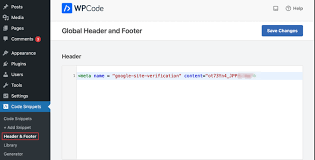How to Create a Sitemap in WordPress and Increase Ranking: A Step-by-Step Guide


Creating a sitemap is one of the fundamental steps in optimizing your website for search engines. A sitemap acts as a blueprint for your website, helping search engines find, crawl, and index all your content. This blog will guide you through the process of creating a sitemap and explain how it can help improve your website’s ranking. Additionally, we will cover the benefits and potential drawbacks of using sitemaps, including essential SEO keywords.
What is a Sitemap?
A sitemap is a file that provides information about the pages, videos, and other files on your site, as well as the relationships between them. Search engines like Google read this file to crawl your site more efficiently. There are two primary types of sitemaps:
- XML Sitemaps: These are designed for search engines. They list your website's URLs and include metadata such as when each URL was last updated, how often the page changes, and its importance relative to other URLs on the site.
- HTML Sitemaps: These are designed for users. They provide a clear and straightforward way for visitors to navigate your website.
Why Sitemaps are Important for SEO
Benefits of Sitemaps
- Improved Crawling: Sitemaps help search engines find and index new or updated content faster. This is especially important for large websites, new websites, or websites with many archived pages.
- Enhanced Indexing: Sitemaps provide metadata about each URL, improving the chances of your content being correctly indexed.
- Better Visibility: They can help ensure all important pages are discovered by search engines, increasing your site's visibility in search results.
- Priority and Frequency Information: Sitemaps allow you to specify the importance of each page and how frequently it is updated, helping search engines prioritize crawling.
Potential Drawbacks
- Resource Intensive: Large sitemaps can be resource-intensive for both your server and search engines.
- Not a Guarantee: While sitemaps can help with indexing, they do not guarantee that all your pages will be indexed.
- Potential for Errors: Incorrectly structured sitemaps can lead to errors, potentially harming your SEO efforts.

Step-by-Step Guide to Creating a Sitemap
Step 1: Decide on the Type of Sitemap
Determine whether you need an XML sitemap, an HTML sitemap, or both. XML sitemaps are essential for SEO, while HTML sitemaps can enhance user experience.
Step 2: Create an XML Sitemap
Using WordPress Plugins
If you are using WordPress, plugins like Yoast SEO, All in One SEO Pack, or Google XML Sitemaps can automatically generate an XML sitemap for you.
Install and Activate Yoast SEO:
- Go to your WordPress dashboard.
- Navigate to Plugins > Add New.
- Search for "Yoast SEO" and click "Install Now."
- Activate the plugin.
Generate the Sitemap:
- Go to SEO > General in the WordPress dashboard.
- Click on the "Features" tab.
- Ensure the "XML Sitemaps" feature is enabled.
- Click on the question mark icon next to it and then on "See the XML sitemap."

Using Online Sitemap Generators
For non-WordPress sites or other CMS platforms, online tools like XML-Sitemaps.com can be used.
Go to XML-Sitemaps.com:
- Enter your website URL.
- Configure any additional settings (optional).
- Click "Start."
Download Your Sitemap:
- Once the sitemap is generated, download the XML file.
Step 3: Add the Sitemap to Your Website
Upload the Sitemap:
- Use an FTP client or your website’s file manager to upload the sitemap.xml file to your website’s root directory (e.g., www.yoursite.com/sitemap.xml).
Update Your Robots.txt File:
- Add the following line to your robots.txt file to help search engines find your sitemap:arduino
Sitemap: https://www.yoursite.com/sitemap.xml
- Add the following line to your robots.txt file to help search engines find your sitemap:
Step 4: Submit Your Sitemap to Search Engines
Google Search Console
Sign in to Google Search Console:
- Go to Google Search Console and sign in with your Google account.
Add Your Website:
- If you haven’t already added your site, click "Add a property" and follow the instructions.
Submit Your Sitemap:
- Select your website from the dashboard.
- Navigate to Sitemaps in the left-hand menu.
- Enter the URL of your sitemap (e.g., sitemap.xml) and click "Submit."
Bing Webmaster Tools
Sign in to Bing Webmaster Tools:
- Go to Bing Webmaster Tools and sign in with your Microsoft account.
Add Your Website:
- If you haven’t already added your site, click "Add a site" and follow the instructions.
Submit Your Sitemap:
- Select your website from the dashboard.
- Navigate to Sitemaps in the left-hand menu.
- Enter the URL of your sitemap and click "Submit."

Step 5: Monitor Your Sitemap’s Performance
Regularly check your sitemap’s status in Google Search Console and Bing Webmaster Tools to ensure it is being crawled and indexed properly.
Increasing Your Website’s Ranking with a Sitemap
Optimize Your Sitemap
- Prioritize Important Pages: Ensure that your most important pages (those with high traffic or valuable content) are included in your sitemap.
- Keep It Updated: Regularly update your sitemap to include new or updated content.
- Limit the Number of URLs: If you have more than 50,000 URLs or a file size over 50MB, create multiple sitemaps and use a sitemap index file.
Leverage SEO Best Practices
- Quality Content: Regularly publish high-quality, relevant content to keep users engaged and search engines interested.
- Keyword Optimization: Use relevant keywords throughout your content, including titles, headers, and meta descriptions, to improve search engine visibility.
- Mobile Optimization: Ensure your website is mobile-friendly to cater to the growing number of mobile users.
- Fast Loading Speeds: Optimize your website’s loading speed to improve user experience and reduce bounce rates.
- Internal Linking: Use internal links to connect related content, helping search engines understand your site's structure and hierarchy.
Monitor and Analyze
- Use Analytics Tools: Utilize tools like Google Analytics and Google Search Console to monitor your website’s performance.
- Track Rankings: Keep an eye on your keyword rankings to understand how well your content is performing.
- Adjust Strategies: Based on your analytics, adjust your content and SEO strategies to improve your site’s performance continually.
Conclusion
Creating and submitting a sitemap is a crucial step in enhancing your website’s SEO and ensuring that your content is indexed by search engines. By following the steps outlined in this guide, you can create an effective sitemap, submit it to major search engines, and optimize your website to improve its ranking. Remember to monitor your sitemap’s performance and make necessary adjustments to maintain and improve your search engine visibility. While sitemaps are powerful tools for SEO, they should be part of a broader, well-rounded SEO strategy that includes high-quality content, keyword optimization, and a focus on user experience.
By integrating these practices, you can achieve better search engine rankings, drive more traffic to your website, and ultimately, achieve your online goals.

No comments:
Post a Comment